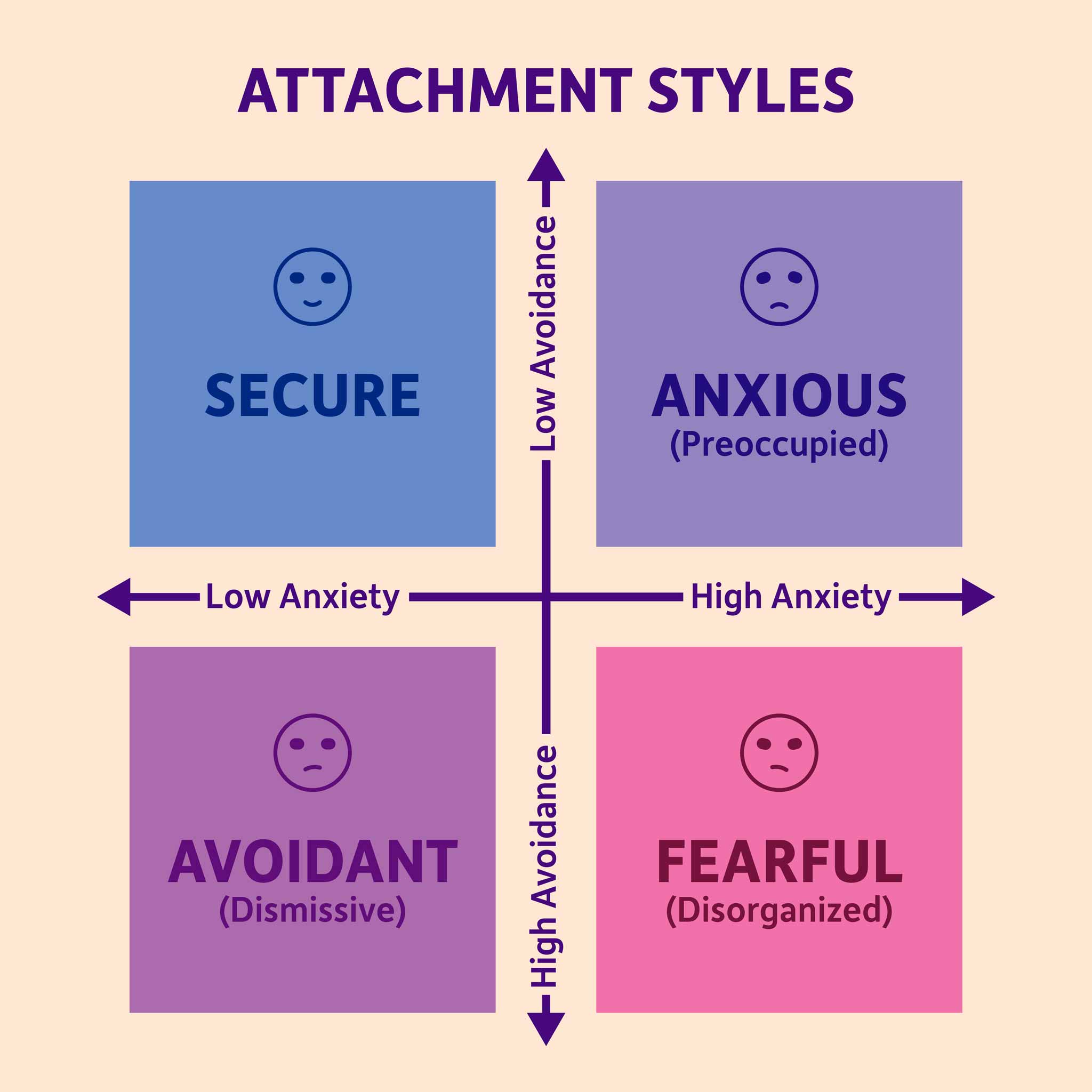Secure attachment is a foundational interpersonal pattern characterized by comfort with emotional closeness, trust in partners, and effective communication. People with a secure attachment style generally form stable and supportive relationships, feel confident both giving and receiving care, and are resilient during conflict or stress. This style is associated with healthy relationship dynamics and is often the result of responsive caregiving in early life.
Secure Attachment
| |
|---|---|
| Full Name | Secure Attachment Style |
| Core Characteristics | Emotional availability, trust, autonomy with intimacy, emotional regulation |
| Developmental Origin | Consistent and responsive caregiving in early childhood |
| Primary Behaviors | Comfort with closeness, effective communication, conflict resolution, support-giving |
| Adult Relationship Impact | Stable long-term relationships, low jealousy, high empathy and collaboration |
| Associated Traits | High self-esteem, low attachment anxiety and avoidance |
| Contrasts With | Anxious, avoidant, and disorganized attachment styles |
| Associated Disciplines | Psychology, developmental science, relationship therapy |
| Clinical Relevance | Promotes emotional resilience; protective against relational dysfunction and mood disorders |
| Sources: Bowlby (1969), Ainsworth et al. (1978), Hazan & Shaver (1987), Mikulincer & Shaver (2007) | |
History of Attachment Theory
1950s–1960s: The Foundations
Attachment theory was first proposed by British psychoanalyst John Bowlby, who emphasized the importance of early relationships between infants and their caregivers. Bowlby argued that secure attachment to a primary figure forms the blueprint for future relationships.
1970s: Empirical Breakthrough
Mary Ainsworth’s “Strange Situation” experiments classified infant attachment into secure, avoidant, and anxious categories. Securely attached infants sought comfort from their caregiver and were easily soothed after stress, establishing behavioral hallmarks of security.
1980s–1990s: Adult Attachment Research
Cindy Hazan and Phillip Shaver extended attachment theory into adult romantic relationships, identifying patterns similar to those seen in children. Secure attachment in adults correlated with relationship satisfaction, autonomy, and emotional regulation.
2000s–Present: Expansion and Integration
Modern research integrates attachment theory with neurobiology, trauma studies, and relationship counseling. Secure attachment is linked to optimal functioning in stress management, parenting, intimacy, and conflict resolution.
Attachment Dynamics in Adult Relationships
Individuals with a secure attachment style tend to exhibit the following dynamics:
- Open and honest communication with partners
- Low levels of fear regarding rejection or abandonment
- Comfort in both giving and receiving emotional support
- Ability to maintain individuality while staying connected
Benefits of Secure Attachment
Secure attachment promotes:
- Greater relationship satisfaction and stability
- Lower risk of anxiety, depression, and relational distress
- Adaptive emotion regulation and stress resilience
- Healthy parenting and intergenerational transmission of security
FAQs
What causes secure attachment?
Secure attachment is typically formed through consistent, responsive, and sensitive caregiving during early childhood. The child learns that their needs will be met reliably, which fosters trust and confidence.
How does secure attachment affect adult relationships?
Adults with secure attachment tend to form trusting, empathetic, and cooperative partnerships. They handle conflict constructively and support their partners while maintaining a sense of independence.
Can someone develop secure attachment later in life?
Yes. Through emotionally corrective experiences such as therapy or secure relationships, individuals with insecure styles can develop more secure attachment behaviors over time.
Is secure attachment the most common style?
In general populations, secure attachment is the most prevalent style, though rates vary across cultures and are influenced by social, familial, and environmental factors.




